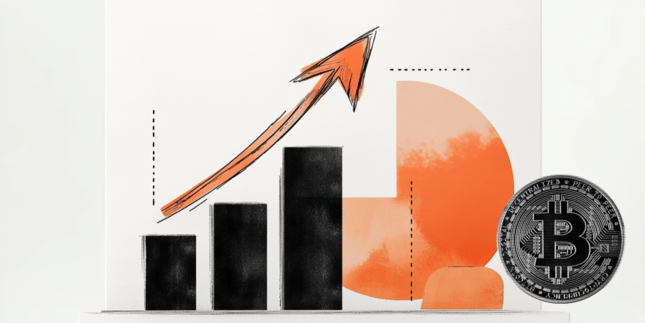- Mexican Peso hovers around 18.08, down 0.09% on risk-on mood.
- Mexico’s Q3 GDP is expected to expand 3.1% YoY and 0.8% QoQ.
- USD/MXN traders await the US Federal Reserve monetary policy meeting, expecting unchanged rates.
Mexican Peso (MXN) registers solid gains against the US Dollar (USD) in the mid-North American session, as Oil prices retreated last Friday’s gains, with the USD/MXN hovering around the 20-day Simple Moving Average (SMA), eyeing a recovery past the 18.10 mark. At the time of writing, the pair is still losing 0.31%, trading at around 18.04.
Mexico’s currency continues to remain underpinned by equity indices in the United States (US) as Wall Street shrugs off Israel's offensive on the Gaza Strip, with fears of a spillover contained.
Hurricane Otis impacted Acapulco, in the southern state of Guerrero, over the weekend, likely weighing on the country’s finances, as the FONDEN – a trust created by previous Mexican government administrations to respond to natural disasters – disappeared since President Andres Manuel Lopez Obrador’s administration began.
Enki Research calculated Initial estimates of damages at around $828 million US Dollars. Still, according to Chuck Watson, a disaster modeler with the former, the economic impact could likely total $10 billion to $15 billion, as revealed by Bloomberg.
In the meantime, USD/MXN traders are eyeing the release of a busy US economic schedule, highlighted by the US Federal Reserve (Fed) monetary policy meeting on November 1, which is expected to hold rates unchanged. Odds for a 25 bps increase to the Federal Funds Rate (FFR) are at 1.4%, as shown by the CME FedWatch Tool.
Daily digest movers: Mexican Peso as the mercy of the Fed, and market sentiment
- First estimates of Hurricane Otis damages stand at around $10 to 15 billion dollars, according to Enki Research, a firm specializing in natural disasters.
- Mexican authorities reported that around 270,000 houses in Acapulco were affected or destroyed, while 80% of hotels were severely damaged.
- The October US Dallas Fed Manufacturing Index plunged to -19.2, worse than September 18.1.
- Elevated US Treasury bond yields, particularly the 10-year benchmark note, rose five basis points to 4.89%, capping the USD/MXN drop despite overall US Dollar weakness.
- The US Dollar Index, which tracks the performance of the Greenback against six currencies, slides 0.40%, down at 106.15.
- Mexico’s economic docket would feature the release of the Fiscal Balance, Gross Domestic Product for Q3, S&P Global Manufacturing PMIs, Foreign Exchange Reserves, and Gross Fixed Investment.
- The US agenda will feature the Fed’s decision, Fed Powell’s press conference, employment data, and S&P Global and ISM Manufacturing PMIs.
- On October 24, Mexico's National Statistics Agency INEGI reported annual headline inflation hit 4.27%, down from 4.45% at the end of September, below forecasts of 4.38%.
- Mexico’s core inflation rate YoY was 5.54%, beneath forecasts of 5.60%.
- Earlier this week, S&P Global Manufacturing PMIs evidenced expansion in US manufacturing and service sectors during October.
- The Bank of Mexico (Banxico) held rates at 11.25% in September and revised its inflation projections from 3.50% to 3.87% for 2024, above the central bank’s 3.00% target (plus or minus 1%).
Technical Analysis: Mexican Peso buyers target the 200-day Simple Moving Average
The USD/MXN uptrend remains intact despite Friday’s dip below the 18.00 figure, which puts the 20-day Simple Moving Average (SMA) at 18.10 at risk of being decisively broken to the downside. A daily close below the latter could pave the way for a test of the 200-day SMA at 17.72. A breach of the last and the subsequent support would be the 50-day SMA at 17.55. On the flip side, if the exotic pair remains above the 20-day SMA, the next resistance will emerge at the October 26 high at 18.42 before challenging last week’s high at 18.46, ahead of the 18.50 figure.
GDP FAQs
What is GDP and how is it recorded?
A country’s Gross Domestic Product (GDP) measures the rate of growth of its economy over a given period of time, usually a quarter. The most reliable figures are those that compare GDP to the previous quarter e.g Q2 of 2023 vs Q1 of 2023, or to the same period in the previous year, e.g Q2 of 2023 vs Q2 of 2022.
Annualized quarterly GDP figures extrapolate the growth rate of the quarter as if it were constant for the rest of the year. These can be misleading, however, if temporary shocks impact growth in one quarter but are unlikely to last all year – such as happened in the first quarter of 2020 at the outbreak of the covid pandemic, when growth plummeted.
How does GDP influence currencies?
A higher GDP result is generally positive for a nation’s currency as it reflects a growing economy, which is more likely to produce goods and services that can be exported, as well as attracting higher foreign investment. By the same token, when GDP falls it is usually negative for the currency.
When an economy grows people tend to spend more, which leads to inflation. The country’s central bank then has to put up interest rates to combat the inflation with the side effect of attracting more capital inflows from global investors, thus helping the local currency appreciate.
How does higher GDP impact the price of Gold?
When an economy grows and GDP is rising, people tend to spend more which leads to inflation. The country’s central bank then has to put up interest rates to combat the inflation. Higher interest rates are negative for Gold because they increase the opportunity-cost of holding Gold versus placing the money in a cash deposit account. Therefore, a higher GDP growth rate is usually a bearish factor for Gold price.
Information on these pages contains forward-looking statements that involve risks and uncertainties. Markets and instruments profiled on this page are for informational purposes only and should not in any way come across as a recommendation to buy or sell in these assets. You should do your own thorough research before making any investment decisions. FXStreet does not in any way guarantee that this information is free from mistakes, errors, or material misstatements. It also does not guarantee that this information is of a timely nature. Investing in Open Markets involves a great deal of risk, including the loss of all or a portion of your investment, as well as emotional distress. All risks, losses and costs associated with investing, including total loss of principal, are your responsibility. The views and opinions expressed in this article are those of the authors and do not necessarily reflect the official policy or position of FXStreet nor its advertisers. The author will not be held responsible for information that is found at the end of links posted on this page.
If not otherwise explicitly mentioned in the body of the article, at the time of writing, the author has no position in any stock mentioned in this article and no business relationship with any company mentioned. The author has not received compensation for writing this article, other than from FXStreet.
FXStreet and the author do not provide personalized recommendations. The author makes no representations as to the accuracy, completeness, or suitability of this information. FXStreet and the author will not be liable for any errors, omissions or any losses, injuries or damages arising from this information and its display or use. Errors and omissions excepted.
The author and FXStreet are not registered investment advisors and nothing in this article is intended to be investment advice.
Recommended content
Editors’ Picks

EUR/USD: Negative bias should persist below the 200-day SMA
EUR/USD lost traction and faded the initial bull run to the area of yearly peaks near 1.0530, all following a late bounce in the US Dollar amid steady risk aversion in the global markets.

GBP/USD alternates gains with losses near 1.2480
After climbing to three-week highs above the 1.2500 mark, GBP/USD has lost some momentum and retreated to the 1.2480 range, driven by a modest recovery in the US dollar on Monday.

Gold extends corrective decline towards $2,730
Spot Gold is under strong selling pressure at the beginning of the week, trading around the $2,730 mark in the American session. The bright metal was unable to advance against a battered US Dollar (USD) despite a dismal market mood.

Crypto Market Crash: How corporate investors $58B move after Trump Inauguration triggered Bitcoin price dip
Bitcoin’s price dipped as low as $98,500 on Monday, its lowest in 12 days since January 15. On-chain data trends show how whale investors’ strategic moves after Donald Trump’s inauguration may have triggered the crypto market crash.

Five fundamentals for the week: Fed, ECB and US GDP try to compete with Trump Premium
The gift that keeps on giving – US President Donald Trump continues to be "generous" with market volatility, but this week, he'll face competition from the Fed. A rate decision in the Eurozone, the first release of US GDP for the entire 2024, and the Fed's favorite inflation gauge will all rock markets. Fasten your seatbelts..

Trusted Broker Reviews for Smarter Trading
VERIFIED Discover in-depth reviews of reliable brokers. Compare features like spreads, leverage, and platforms. Find the perfect fit for your trading style, from CFDs to Forex pairs like EUR/USD and Gold.